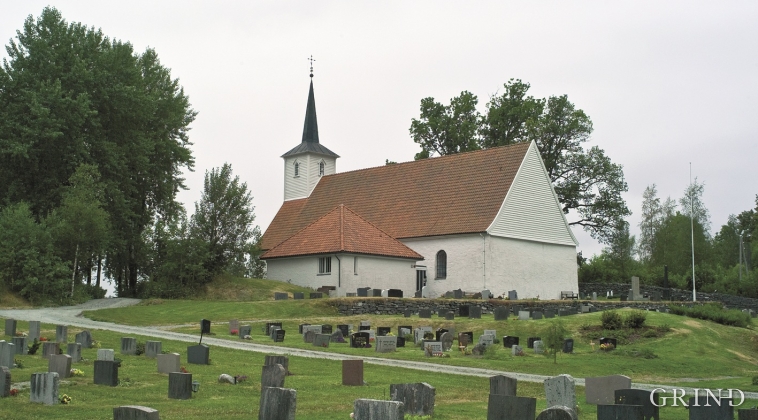Published: 20.02.2013 | Author: Nils Georg Brekke, Hans Emil Lidén
Hosanger church (Svein Nord).
Hosanger church is first mentioned in 1319. In 1329, Audfinn, bishop in Bergen, was on a visitation and wrote to the priest in Hamarr, Sira Peter, for an extra church tax: Geirstadir and Hosanger should be charged half a mark . Hosanger and Gjerstad were then one parish, but after the Black Death Gjerstad parish was joined with Haus parish, together with Modalen. In 1749 Hosanger was separated as a parish on its own.
At the church inspection in 1686 it is evident that Hosanger was a timber church with an added steeple built in front of the western gable; painted inside and “well kept”. Its outside needed maintenance; weatherboard roof, keel and gable boards of “….new cut boards”…”all covered” (with tar). It was this church that burned down in 1795.
The new church was built with walls in granite; “…at the base 21/2 Alen , and at the top 11/2 Alen thick”. The cost estimate included e.g. “5 ‘tylfter’( x 12) roof trusses” and “7,000 roof tiles”. The entire church was estimated to cost 4338 riksdaler . Every farmer should contribute 8 riksdaler. This was a tall order for many smallholders, for some of them it took more than 10 years to manage the payment.
Bishopric priest Johan Nordahl Brun consecrated the church on 18 October 1796, and the otherwise somewhat irascible bishop Claus Pavels, signed the visitation in 1821. “Hosanger Church is in any case the most beautiful in the area of Bergen, light, comfortably fitted out, with Order and Symmetry, tastefully designed, without glaring colours”. In 1865 the church had an extension added, after the Norwegian parliament passed a law on the size of churches and graveyards in relation to the size of the population.
- Hole, I. (1950) Hosanger kyrkje og Hosanger prestegjeld gjennom 200 år: 1750-1950. Bergen.



